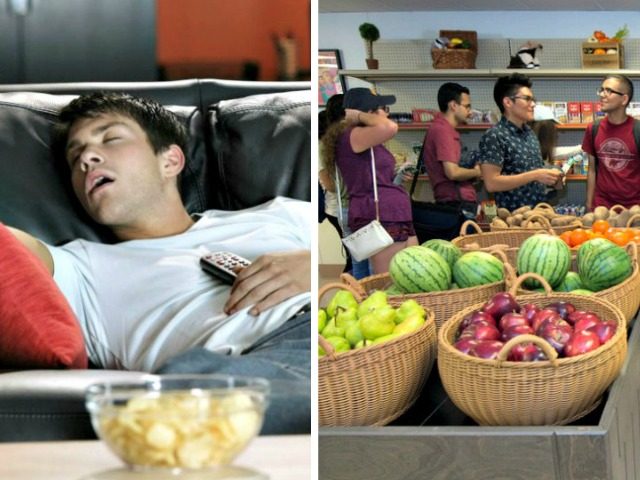The Hope Center for College, Community, and Justice surveyed college students to determine how many of them are facing hunger and “food insecurity” while earning a degree.
“The #RealCollege survey is the nation’s largest annual assessment of basic needs security among college students,” the executive summary of the survey said, noting it “specifically” addressed the lack of food and housing.
The sumary says:
Rates of basic needs insecurity are higher for students attending two-year colleges compared to those attending four-year colleges. “Rates of basic needs insecurity are higher for marginalized students, including African Americans, students identifying as LGBTQ, and students who are independent from their parents or guardians for financial aid purposes.
Students who have served in the military, former foster youth, and students who were formerly convicted of a crime are all at greater risk of basic needs insecurity. Working during college is not associated with a lower risk of basic needs insecurity, and neither is receiving the federal Pell Grant; the latter is in fact associated with higher rates of basic needs insecurity.
The survey was taken in the fall of 2018 at 123 two- and four-year schools across the United States.
The survey also served as a platform for a New York Times lengthy feature profiling some of these students and their struggle to get enough to eat daily.
“In the coming weeks, thousands of college students will walk across a stage and proudly accept their diplomas. Many of them will be hungry,” the Times reported.
“A senior at Lehman College in the Bronx dreams of starting her day with breakfast,” the Times reported. “An undergraduate at New York University said he has been so delirious from hunger, he’s caught himself walking down the street not realizing where he’s going.”
“A health sciences student at Stony Brook University on Long Island describes ‘poverty naps,’ where she decides to go to sleep rather than deal with her hunger pangs,” the Times reported.
The Times article included some of the developments to address college student “hunger,” from food banks on campuses to hooking them up with social services, including food stamps.
But measuring hunger and “food insecurity” in the United States is not an exact science and some question how these conditions exist in a country with a plentiful food supply.
The “food insecurity” movement expanded during the Obama administration, and author and columnist James Bovard challenged it in 2015 in a USA Today column entitled “Washington’s Latest Hunger Charade.”
Bovard wrote:
The Agriculture Department announced this morning that 48 million Americans live in “food insecure” households. Soon you’ll hear we’re suffering an epidemic of hunger. While the federal government is already feeding more than 100 million Americans, we’ll be told that it just isn’t enough.
But it isn’t true. “Food insecurity” is a statistic designed to mislead. USDA defines food insecurity as being “uncertain of having, or unable to acquire, enough food to meet the needs of all their members because they had insufficient money or other resources for food.” USDA noted: “For most food-insecure households, the inadequacies were in the form of reduced quality and variety rather than insufficient quantity.”
The definition of “food insecure” includes anyone who frets about not being able to purchase food at any point. If someone states that they feared running out of food for a single day (but didn’t run out), that is an indicator of being “food insecure” for the entire year — regardless of whether they ever missed a single meal. If someone wants organic kale but can afford only conventional kale, that is another “food insecure” indicator.
Bovard noted that the National Academies of Sciences, Engineering and Medicine have criticized USDA “for how these statistics are contorted from a measure of household ‘security’ into a misleading estimate that millions of individuals go hungry.”
In other words, it is a political issue.
“Boosting federal education funding should be part of the presidential election discussion, said Dr. Goldrick-Rab, who cited a higher education plan put out by Senator Elizabeth Warren of Massachusetts, a Democrat who is running for president,” the Times reported.
“If no progress is made, Dr. Goldrick-Rab said, ‘existing investments in financial aid will be undermined as students drop out simply because they don’t have enough to eat,’” the Times reported.
Follow Penny Starr on Twitter

COMMENTS
Please let us know if you're having issues with commenting.